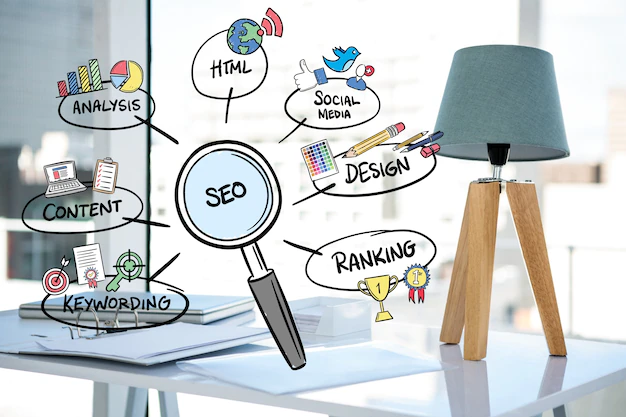What is SEO: Full Form and Why SEO is Important for Digital Marketing

SEO, or search engine optimization, is a method of digital marketing used to raise a site’s organic search engine rankings (SERPs). In other words, SEO is all about ensuring that your website shows up as high as possible in the list of results when people search for relevant keywords on search engines like Google.
Why is this important? Because the higher your website appears in the SERPs, the more likely people are to click on it and visit your site. And if you’re running a business, you want as many people as possible to visit your site so that you can generate leads and sales!
In this article, we’ll explain SEO in full form and why SEO is so important for businesses that want to succeed in the digital world.
What is SEO?
SEO is a short form for “Search engine optimization”. Search engine optimization (SEO) is a method of marketing that takes time to bear fruit but ultimately increases a website’s rank in organic search results on Google and other international search engines.
SEO, or search engine optimization, is the process of enhancing a website’s visibility in organic search results. It involves improving the website’s content, structure, and authority so that it is more visible and relevant to search engines.
SEO can be divided into two main categories: on-page SEO and off-page SEO.
On-page SEO refers to all the factors you can control on your websites, such as the content, title tags, meta tags, and images.
Off-page SEO, on the other hand, refers to all the activity that takes place outside of your website that can impact your ranking, such as link building, social media engagement, and brand mentions.
There are many benefits of SEO, including increased traffic, higher brand awareness, and improved ROI. If you want to learn more about SEO and how it can help your business, contact a reputable digital marketing agency today.
SEO brief history
The history of SEO is long and complex, with roots that date back to the early days of the internet. The first real instance of SEO can be traced back to John Audette, who used keywords and link building to improve his website’s ranking in search results.
This early form of SEO quickly caught on, and soon webmasters were using it to improve their rankings. However, it wasn’t until the late 1990s that SEO started to take off. This is when Google launched its now-famous algorithm, which changed the way that websites were ranked in search results. Since then, SEO has evolved significantly, with new techniques and strategies being developed all the time.
However, the basic principles remain the same: by using keywords and links, webmasters can influence their website’s position in search results.
What is the full form of SEO?
SEO stands for “search engine optimization,” which is its full name. It is the process of getting traffic from search engine results that are “free,” “organic,” “editorial,” or “natural.”
What are the benefits of SEO?
As the world of online marketing has grown, so too has the importance of SEO. Search engine optimization is a process that helps to ensure that your website appears as high as possible in search engine results. This, in turn, can lead to increased traffic and visibility for your site. SEO has many benefits, including the ones below:
Improved traffic: One of the main benefits of SEO is that it can help to increase the amount of traffic that your website receives. This is because appearing higher in search engine results often leads to more clicks and views.
Increased visibility: Another benefit of SEO is that it can help to make your website more visible. In other words, it can help you to reach a wider audience and get more people to see your site.
Better ROI: Finally, SEO can also offer a better return on investment than other marketing activities. This is because it is a relatively cost-effective way to drive traffic and improve visibility for your site.
SEO is essential to any online marketing strategy, and the benefits are clear. If you want to improve traffic and visibility for your website, then optimizing your site for search engines should be a top priority.
Types of SEO in digital marketing?

There are many different types of SEO that can be employed in digital marketing. Here are some of the most common:
1. On-Page SEO
On-page SEO refers to the optimization of a website’s individual pages to rank higher in search engine results. This includes things like page titles, meta descriptions, and how many times a keyword appears on a page.
2. Off-Page SEO
Off-page SEO is concerned with the factors that influence a website’s ranking outside of its content. This includes things like backlinks, social media signals, and brand mentions.
3. Technical SEO
Technical SEO covers the more technical aspects of a website’s architecture and code that can impact its search engine rankings. This includes things like site speed, indexation, and mobile responsiveness.
4. Local SEO
Local SEO is a specialized form of SEO that is focused on ranking for local searches. This includes optimizing for things like Google My Business listings and review sites.
5. E-commerce SEO
Ecommerce SEO is a type of SEO that is specifically designed for eCommerce websites. This includes optimizing product pages for things like title tags, meta descriptions, and product reviews.
6. Video SEO
Video SEO is a type of SEO that is focused on optimizing videos for search engines. This includes things like creating transcripts, adding keywords, and creating video sitemaps.
7. Image SEO
Image SEO is a type of SEO that is focused on optimizing images for search engines. This includes things like adding alt text and descriptive file names.
8. News SEO
News SEO is a type of SEO that is focused on optimizing news articles for search engines. This includes things like adding keywords and publishing dates.
9. Social media SEO
Social media SEO is a type of SEO that is focused on optimizing social media profiles for search engines. This includes things like adding keywords and descriptions, as well as creating shareable content.
10. Content SEO
Content SEO is a type of SEO that is focused on optimizing web content for search engines. This includes things like adding keywords, creating compelling titles and publishing high-quality content.
Where is SEO used?
SEO is used in a variety of places on the internet. It can be used on websites, blogs, and even social media platforms. SEO is used to help improve the visibility of a website or page in search engine results pages (SERPs). By improving the visibility, it is more likely that people will click on the result and visit the site.
This can lead to more traffic and potentially more customers or conversions for the site. In addition to helping improve visibility, SEO can also be used to help improve the click-through rate (CTR) of a website or page.
CTR is a metric that measures how often people who see a result in the SERPS click on it. A higher CTR can lead to more traffic and potential customers or conversions for a site.
Finally, SEO can also be used to help improve the ranking of a website or page in the SERPS. A higher ranking can lead to more traffic and potential customers or conversions for a site.
What are some common SEO mistakes?
SEO, or search engine optimization, is one of the most important tools in a digital marketer’s toolbox. By optimizing your website for search engines, you can improve your visibility online and attract more visitors to your site. However, SEO is not a simple process, and several common mistakes can hurt your chances of success.
One mistake that many businesses make is failing to research keywords properly. To rank well in search results, you need to use relevant and popular keywords on your website. If you choose keywords that are too general, you may get lost in the sea of results. On the other hand, if you choose keywords that are too specific, you may find it difficult to attract enough traffic. Finding a balance between the two extremes is crucial.
One more common mistake is not making your website mobile-friendly. Since more and more people are using their phones and tablets to use the internet, your website needs to be mobile-friendly. If it isn’t, you could be losing out on a lot of potential traffic. Make sure your website is responsive and easy to navigate on all devices.
Finally, don’t forget about local SEO. If you want your website to be found by people in your area, you need to optimize it for local search engines. Include your city and state in your keywords and make sure your NAP (name, address, and phone number) is up-to-date. By doing these things, you can make it more likely that your business will show up high in local search results.
How can I improve my SEO?
Search engine optimization, or SEO, is what you do to get your website to show up higher in search results. The higher your website ranks on a search engine results page, the more likely people are to find it. There are several ways to improve your SEO, including:
- Make sure your website is mobile-friendly
- Using keyword-rich titles and descriptions
- Building quality backlinks
- Creating fresh and unique content
- Right Content with proper title
- Proper use of H1, H2, and H3 tagging
- Proper Optimization
- Used content Related Imaged
- Select Right Categories
- Use proper URL and Meta description in blog etc
By following these simple tips, you can help improve your website’s SEO and draw more visitors to your site.
How can I learn SEO?
There is no one-size-fits-all answer to this question, as the best way to learn SEO depends on your existing skills and knowledge. However, some general tips can help you get started.
- Firstly, it’s important to familiarize yourself with the basics of SEO.
- Second, make sure that you have an understanding of the basics of web design and development.
- Additionally– You need a basic knowledge of the website, if you don’t already know how to build a website, you’ll need to learn this before you can start optimizing it for search engines. Once you have a solid foundation in web development, you can start learning more about SEO by reading books or articles on the subject.
- finally, many online courses can teach you the basics of SEO. Also, there are free SEO videos are available on YouTube where you can learn SEO at the beginning level.
- Whichever method you choose, make sure that you stay up-to-date with the latest trends in SEO, as the field is constantly changing.
Conclusion
SEO is an important part of digital marketing because it helps you improve your website so that it can rank higher on search engine results pages. This, in turn, can help you attract more visitors to your site, which can lead to more sales and conversions. While SEO may seem complex and time-consuming, it is worth the effort if you want to succeed in the online world.
Hey kids, how much did you like What is SEO: Full Form and Why SEO is Important for Digital Marketing? Please share your view in the comment box. Also, please share this Full Form with your friends on social media so they can also enjoy it, and for more, please bookmark storiespub.com.
FAQs
What are some on-page SEO techniques?
On-page SEO techniques include optimizing title tags, meta descriptions, header tags, and content for relevant keywords, as well as optimizing images and internal linking.
What are some off-page SEO techniques?
Off-page SEO techniques include building high-quality backlinks, guest blogging, social media marketing, and influencer outreach.
What are some technical SEO techniques?
Technical SEO techniques include optimizing website speed and performance, implementing structured data markup, and ensuring that the website is mobile-friendly.
What are some popular SEO tools?
Popular SEO tools include Google Analytics, Google Search Console, SEMrush, Ahrefs, and Moz.
How long does it take to see results from SEO efforts?
It can take several months to see significant results from SEO efforts. However, consistent and ongoing SEO efforts can lead to long-term success in search engine rankings and website traffic.
Suggested Article –




